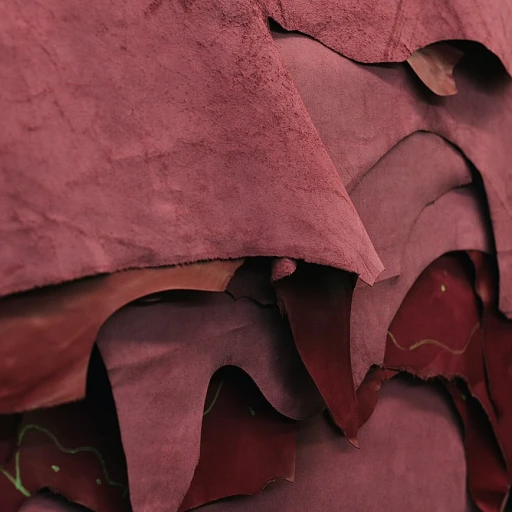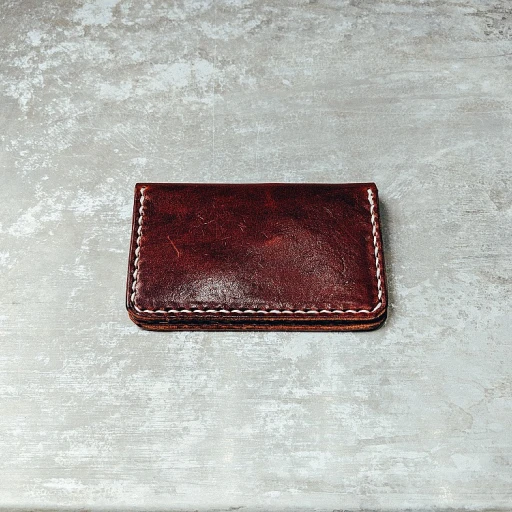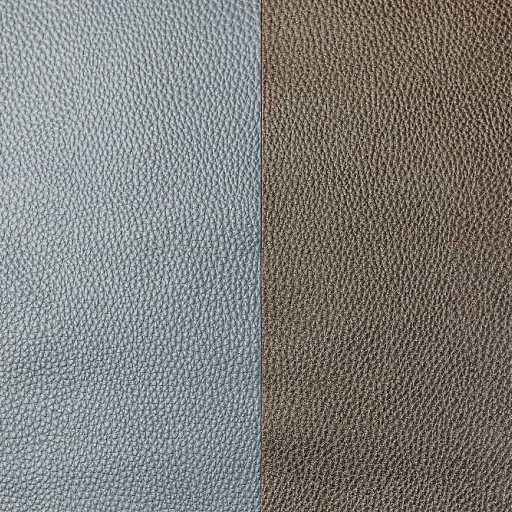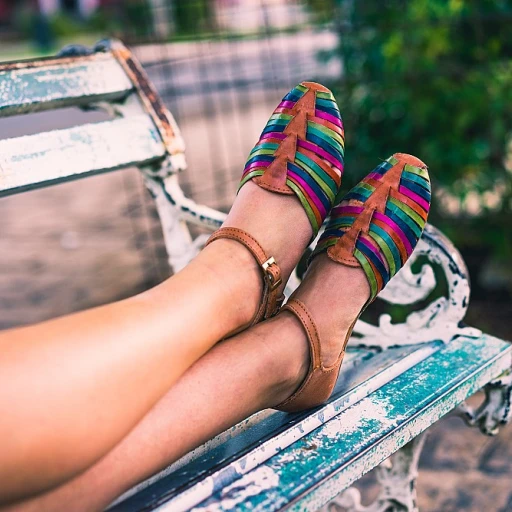
The Exotic Allure: Tracing the Cultural Footprint of Luxury Leather
The Time-Honored Tradition of Exotic Leather
Delving into the world of luxury leather goods reveals a mesmerizing history where exotic leather stands as a hallmark of opulence and elegance. The prestigious status of items crafted from exotic skins such as crocodile, snake, and ostrich, is undeniably woven into fashion's rich tapestry. According to a report by Grand View Research, the global luxury leather goods market size was valued at USD 48.55 billion in 2019 and is expected to grow significantly, a testament to the enduring appeal of these materials.
The intricate process of sourcing and treating these leathers has been refined over generations. With each meticulously crafted piece, artisans not only preserve traditional techniques but also contribute to the narrative of luxury fashion. An example to highlight is the iconic Birkin bag by Hermès, fashioned from luxurious leathers, symbolizing status and impeccable taste. This timelessness is echoed in the words of renowned fashion designer, Michael Kors, who said, 'The right handbag can flatter your figure and complete a favorite outfit.' This sentiment underlines the confluence of fashion and functionality in luxury leather goods.
Global Influences Shaping Exotic Leather Demand
The craving for exotic leather has been influenced by cultural shifts and economic dynamics. As economies burgeon and personal incomes rise in regions like Asia-Pacific, consumer appetites for luxury products have skyrocketed. A study by Bain & Company highlighted that China, in particular, has emerged as a powerhouse in the consumption of luxury items, fueling a surge in demand for high-end leather goods. The increasing prominence of exotic leathers aligns with this trend, symbolizing a blend of prosperity and panache.
Moreover, the proliferation of fashion influencers and the digital era's visual culture have played a pivotal role in bringing the allure of exotic leather to the forefront. Social media platforms showcase exotic leather goods as not only fashion statements but also as investments in one's heritage. The bucolic charm and the perceived rarity of such materials are further augmenting their appeal amidst the modern backdrop of fast fashion.
The Unwavering Appeal of Exotic Skins
Despite societal shifts and evolving fashion sensibilities, the prestige of exotic leather remains steadfast. Designers continue to harness their unique textures and patterns to craft pieces that merge contemporary aesthetics with timeless sensibilities. When looking at auction results, rare leather items have repeatedly broken records, indicating the high value placed on such goods. Sotheby's auctioned a crocodile skin handbag for a record-breaking $300,168, which speaks volumes about the collector's zeal for exotic leather accessories.
These materials are not just mere fashion elements; they epitomize a legacy of sophistication and discerning taste. As fashion narratives unfold and environmental awareness rises, the journey of exotic leathers through the echelons of luxury is both celebrated and scrutinized - balancing the scale between conservation and desire for exclusive, handcrafted goods.
From Runway to Heirloom: The Legacy of Exotic Leather in Haute Couture
The Legacy of Exotic Leather in High Fashion
The legacy of exotic leather is deeply interwoven with the fabric of haute couture, serving as a symbol of opulence and refined taste. According to a report by Grand View Research, the global luxury leather goods market size was valued at USD 48.55 billion in 2018 and is expected to grow, highlighting an enduring demand [Grand View Research]. Design houses like Hermès and Louis Vuitton have long revered crocodile, python, and ostrich skins for their rarity and texture, transforming them into iconic handbags and accessories that often accrue value over time, much like fine art.
Investing in Craftsmanship: Exotic Leather as a Symbol of Artisanship
In the realm of premium leather goods, the emphasis on craftsmanship is paramount. The intricate process of treating and tailoring exotic skins into luxury items showcases a brand's commitment to quality. For instance, the renowned Birkin bag by Hermès requires highly skilled artisans and up to 48 hours to create a single bag, reinforcing the principle that true luxury is born from meticulous attention to detail. This underscores the notion that investing in exotic leather goods is not just an indulgence but a nod to the art of high fashion itself.
The Heirloom Phenomenon: Exotic Leather in the Heritage Narrative
Exotic leather pieces are often perceived as timeless investments passed down through generations. With an increasing consumer focus on sustainability and value retention, many covet these items for their ability to withstand the test of time both in style and structure. Statistics from Bain & Company show a shifting preference among luxury shoppers towards investment pieces with potential heirloom qualities [Bain & Company]. The allure of exotic leather goods lies in their story, their exquisite feel, and the very essence of luxury they embody—a combination that clearly distinguishes them in the world of fashion.
The Ethics of Elegance: Navigating Conservation and Luxury
Evaluating the Intersection of Conservation and Luxury Leather
The luxury leather industry has long been synonymous with refinement and sophistication, with exotic leather pieces becoming the pinnacle of high fashion. Yet, it's crucial to balance this prestige with ecological mindfulness. According to a 2021 study, the demand for luxury goods has been steadily increasing, yet surprisingly, 21% of consumers are now placing greater emphasis on sustainability (Statista). This rising tide of environmental awareness pushes luxury leather brands to implement ethical sourcing practices that ensure the conservation of exotic species for future generations.
The Sustainability Quotient in Exotic Leather Crafting
- Adopting sustainable sourcing methods.
- Ensuring certifications are in place, such as the Convention on International Trade in Endangered Species of Wild Fauna and Flora (CITES).
- Creating transparency in the supply chain to foster consumer trust.
As voiced by influential designers like Stella McCartney, the fashion industry's ecological footprint can no longer be ignored. As such, heritage and upcoming luxury leather brands are exploring innovative alternatives like lab-grown leather, which offers a reduction in environmental impact. Brands like Modern Meadow are trailblazing this technology and in doing so, have seen a significant consumer interest spike, indicating a market shift towards 'eco-luxury'.
Strategies for Ethical Exotic Leather Procurement
For a luxury leather goods owner, maintaining a balance between opulence and ethics is key. Implementing strategies such as partnering with local artisans ensures a boost in community economies while also maintaining a rigorous standard of quality. Brands like Hermes have exemplified this through their investment in crocodile farms, ensuring control over the animal welfare standards and the quality of the leather produced, as reported by Business of Fashion. Leveraging such strategic advancements not only enhances brand integrity but also fortifies customer loyalty – a critical currency in the competitive luxury sector.
Engaging in the Cultural Conversation on Exotic Leather
In today's digital age, fashion dialogues extend well beyond traditional runways to online platforms where the ethical implications of exotic leathers are hotly debated. Influencers and fashion critics often quote alarming statistics, such as the fact that the global luxury leather goods market, valued at approximately $217.49 billion in 2020, is expected to reach $411.84 billion by 2027, growing at a CAGR of 9.6% from 2021 to 2027 (Allied Market Research), highlighting the sector's rapid expansion but also the need for responsible growth. In contributing to these discussions, luxury leather goods businesses can position themselves as industry leaders in ethical fashion, shaping trends rather than merely following them.
The Cultural Debate: Exotic Leather's Role in Modern Fashion Discourse
The Intersection of Tradition and Trendsetting in Exotic Leather Fashion
Exotic leather has always walked a fine line between high fashion and high controversy. With sustainability and ethical sourcing at the forefront of consumer consciousness, exotic leather continues to weave its narrative in the fashion industry. Statistically, the global luxury leather goods market is expected to grow, with a CAGR of nearly 4.3% from 2021 to 2026, highlighting the enduring appeal of luxury items despite ethical debates. The conversation about exotic leather is as vibrant as the colors of a python skin, with opinions as varied as the patterns on a water monitor lizard.
Creating Harmony: Fashion's Responsibility to Balance Aesthetics with Ethics
Fashion influencers and designers alike are increasingly cognizant of their roles as cultural custodians. The exotic leather segment, while a smaller niche within the luxury fashion space, is paramount in setting benchmarks for responsible luxury. Brands are responding by investing in transparent supply chains and certifications like CITES, ensuring species' conservation is not compromised for the sake of elegance. According to a study, luxury consumers are willing to pay up to 20% more for sustainably produced goods, indicative of a clear shift towards ethical consumption.
Striking a Chord: The Symbolic Essence of Exotic Leathers
In the fashion dialogue, exotic leather retains its status as a symbol of opulence and bespoke craftsmanship. It tells a story unique to its wearer, a narrative stitched together by the hands of artisans. However, with 57% of Internet users saying they would boycott a brand that doesn’t align with their social beliefs, luxury brands are tasked with crafting a responsible image that resonates with this cultural paradigm. Thus, pieces crafted from alligator or snakeskin aren't just fashion statements; they're conversational pieces epitomizing a legacy of artistry juxtaposed against modern values.
Charting a New Course: Innovations and Alternatives in Luxury Leather
Exotic leather may represent tradition, but it also stands at the cusp of innovation. As designer minds engage with the age-old material, new forms emerge. Biofabrication and sustainable alternatives are gaining traction, and the market for ethical luxury is burgeoning. Data shows that the alternative leather market could hit $85 billion by 2025, a testament to the evolving landscape of luxury goods. By balancing heritage with horizon, the luxury fashion industry can redefine the essence of exotic leather for a new generation.
-large-full.webp)
-large-teaser.webp)



-large-teaser.webp)
-large-teaser.webp)